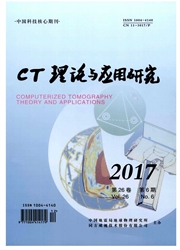

 中文摘要:
中文摘要:
地震走时层析成像是地球物理反演中成熟的方法之一,已在许多领域得到广泛应用,并取得了良好的效果。本文介绍的地震层析成像方法包括模型参数化、射线追踪和理论走时计算、非线性方程组的线性化、线性化方程组的求解以及解的评价。观测数据使用了中国地震局地球物理勘探中心在岫岩陨石坑取得的浅层地震折射资料,反演得到两条近垂直交叉剖面的P波速度结构。结果表明,该坑为一简单坑,直接撞击形成的区域为直径约1.8km、深度约700m的坑体;坑中心深度约700m周围以及向下出现的7.0km/s以上的高波速可能是陨石撞击时所产生的高温高压使表层岩石达到熔融状态,改变了围岩的性质,致使围岩速度升高。
 英文摘要:
英文摘要:
Seismic tomography is one of commonly-used geophysical inversion method, which has been widely used in many fields and has achieved good effect. This paper introduces seismic tomography: including model parameterization, ray tracing and seismic travel-time calculation, nonlinear equation linearization, solving linear equations and evaluation of the solution. The P wave velocity structure of the two cross profiles has been obtained in Xiuyan crater, using seismic refraction data obtained by Geophysical Exploration Center, China Earthquake Administration. The results show that it is a simple crater, with a diameter of about 1.8 kin, and depth about 700 m The higher velocity of 7.0 km/s appearing at the depth of about 700 m indicates that the high temperature and high pressure formed by meteorites colliding make the rock melting, and change the nature of the surrounding rock, causing the velocity of surrounding rock increasing.
 同期刊论文项目
同期刊论文项目
 同项目期刊论文
同项目期刊论文
 期刊信息
期刊信息
